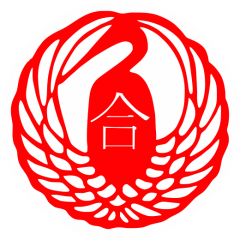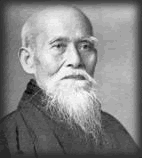Inhalt
O-Sensei Morihei Ueshiba, the founder of Aikido
A personal remark
Author: Christian Büttner, Sensei of AIKI-DO (6 Dan Aikikai )/Sifu of WingTsun (4 HG/EWTO)
I can only write about what I have experienced with the art of AIKI from personal experience. After a long stay in Japan, I became aware more than ever-and through numerous seminars before, because I was allowed to practice different styles-that O’Sensei was clearly and straightforwardly a samurai with all his virtues/imprints.
One must also not forget that even during his formal training, the founder already looked far beyond the horizon of his own art, which was already steadily developing at that time…He was a martial artist through and through with distinct ethics and a deep moral conception.
The image of a so-called dear white-bearded man, philosophizing about love, harmony, and universal power fit perfectly into our western thought image of 1969 (“hippie era/love and peace) when the first Japanese Senseis inspired Europe with this so-called “dancing” gentle art of self-defense.
But this was definitely not the “martial art” of the founder, this is now more than ever proven. It was the development of this son, his disciples and their disciples. And at this point, it should be emphasised that there is certainly no gentle self-defense. I would like to leave the general discussion about this to others…
There is no art that is more controversial in the general martial arts world due to its functionality, self-defense etc., than the Aikido O-Sensei’s Morihei Ueshiba’s. It is the effortless control of an attacker, unbelievable energetic boosts, and strongly oriented religious attitude, that has more than influenced his art.
A Short Biography
Morihei Ueshiba was born on 14.12.1883 in Tanabe, Wakayama Prefecture. He lived in Shirataki, Hokkaido from 1921-1919 and in 1915 Morihei Ueshiba became a disciple of Sokaku Takeda, who taught Daito-Ryu-Aikijutsu. Taktaka’s teaching methods are the main elements of O-Sensei’s aikido.
In 1919 O-Sensei Ueshiba met Onisaburo Deguchi, a charismatic spiritual leader of the Omoto religion. Ueshiba moved to Ayabe (the heart of the Omoto religion) near Kyoto from 1919-1927. In 1927, Ueshiba moved to Tokyo and opened its first dojo, the Kobukan, in 1931.
Up until 1935, O’Sensei Ueshiba taught the techniques of Daito-Ryu-Aikijutsu. He had received his teaching license from Sokaku Takeda. Although he taught these techniques, O-Sensei no longer had any contact with Sokaku Takeda. In this pre-war period, his art was often called AIKI-Budo.
Early films (Aiki News, Aiki Budo) already showed Ueshiba’s own dynamic evolution through strong techniques within the movement. The influence of weapon exercises such as juken (the bayonet) is also demonstrated. There are many comparisons to today’s Aiki-Jo techniques and the relationship based on them. In addition, Ueshiba was also influenced by the martial arts techniques of Tenjin Ryu-Jujutsu, Yagu-Ryu Jutsu, and Kodokan Judo.
The Evolution of Weapons in Aikido
In 1937, Ueshiba enrolled in the Kashima Shinto sword school with his student Zenzaburo Akazawa. This was located in Kashima. Ueshiba then invited many of the teachers to Iwama to teach there.
These techniques formed the basis of Aiki-Ken.
The development of the Aiki-Jo, on the other hand, is based on O’Sensei’s knowledge of yari (spear), juken (bayonet) and naginata (short lance) techniques.
Aritoshi Murashige (an early student of O-Sensei) studied the leadership of Jos in the Kobukan Dojo in the early 1930’s. This may have had an influence on the development of Aiki-jo.
All of these influences and the unique movement of Tai-Sabaki are most likely what characterized the development and use of Jos and Ken in Iwama Ryu.
The Years 1942-1969
In 1942 Ueshiba moved to Iwama in Ibaraki Prefecture and lived there until his death in 1969. Living here provided him with a life or meditation, agriculture, and intensive training.
Quote from Stanley Prenin-Aikido historian and editor of AIKI-News in Japan:
This time in Iwama demonstrates the development of modern Aikido in every respect…Morihei Ueshiba could engage more freely than ever in intensive training and meditation in order to achieve the result of a martial art: to solve a conflict in a peaceful way…
During the early period in Iwama, O-Sensei studied weapons very intensively. From this developed a true form of Budo, which includes the forms of the sword and the stick.
The founder died in 1969, leaving the Aiki Shuren Dojo and the Aiki Shrine (Aiki Jinja) in the hands of Morihiro Saito Sensei, who had been his student since 1945. Saito Sensei was therefore obligated to continue to cultivate the teachings of the founder in its original form.


